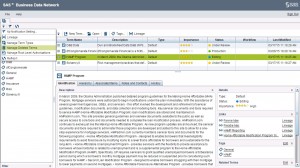Having introduced the term of Data Governance and defined business objectives, we can start to fulfill the first tasks within Data Governance programme construction.
Step 1: business meaning of data
While conducting their activity, organizations use many industry-specific terms. The mere definition of who a customer is for the company can vary, depending on the business perspective of various departments – for the marketing, a customer is every person the organization communicates with, but for the departments responsible for product service these are entities who eventually accepted the offer. Reconciliation of these terms is crucial for proper interpretation of the business situation and the right understanding of the conclusions and forecasts presented in the reports. Each attribute has its business meaning which should be interpreted unambiguously in the organization and specified business owners should be obliged to define this meaning. Following the launch of Data Governance initiative, these owners are Data Stewards.
The information on the business (technical) meaning of data should be publicly available and promoted in the enterprise. As a result, the employees will be able to:
- properly interpret business results and listings
- properly assess the launched strategic initiatives, their aims and tasks.
Among SAS Data Governance tools the process of managing such business terms dictionary is assigned to SAS Business Data Network.

Each business term has a flexible set of attributes describing it, its business owner and references to other terms or external resources and files specifying the definition. Thanks to hierarchy building, it is possible to create a picture of even the most complicated terms related e. g. to risk management in the financial sector. Additionally, in order to ensure suitable flow of responsibility and the compliance of changes with the enterprise evolution, editing of the content of the definitions is supported by customizable flow of tasks – in short this means that each change must be approved by the authorized Data Steward. Such dictionary is open and available both for the company employees (e. g. through direct search of the terms from the internet browser) and computer systems (through REST-API services).
At the beginning of its journey with Data Governance, each organization arranges its business terms (it may also be referred to as “top-down approach”) and obtains one source of knowledge of any business objects and issues related to its activity. As a result, employees use a unified language in everyday work, make better decisions and understand the interconnections between e. g. segments of customers to which the company directs its offer and the products which it offers them. Such dictionaries are also a knowledge base for supporting risk management processes, implementing ISO norms or a guide to complex terms used in the monitoring of the company’s effectiveness or financial situation measures.
At the same time it must be noted that the process of building a business terms dictionary is not, just like Data Governance initiative, a one-time project. This means it is not necessary to write down all terms used by the organization at once; it is better to be prepared for incremental development of the dictionary and focus on entering to the dictionary the most important areas of activity in the beginning.
Read the following entries, in which the next steps related to starting and continuing Data Governance initiative in an organization are described. I encourage you to make yourself familiar with SAS Data Governance products..

2 Comments
Pingback: Data Governance - first steps - part 3 of 4 - Bright Data
Pingback: Data Governance – first steps – part 4 of 4 - Bright Data